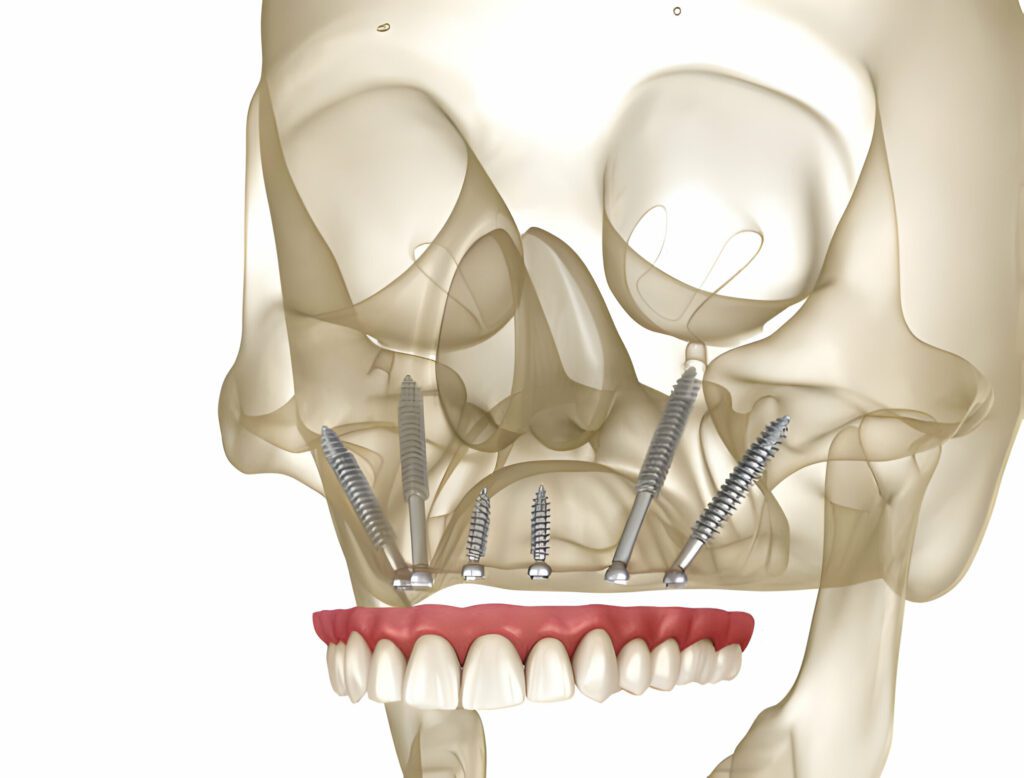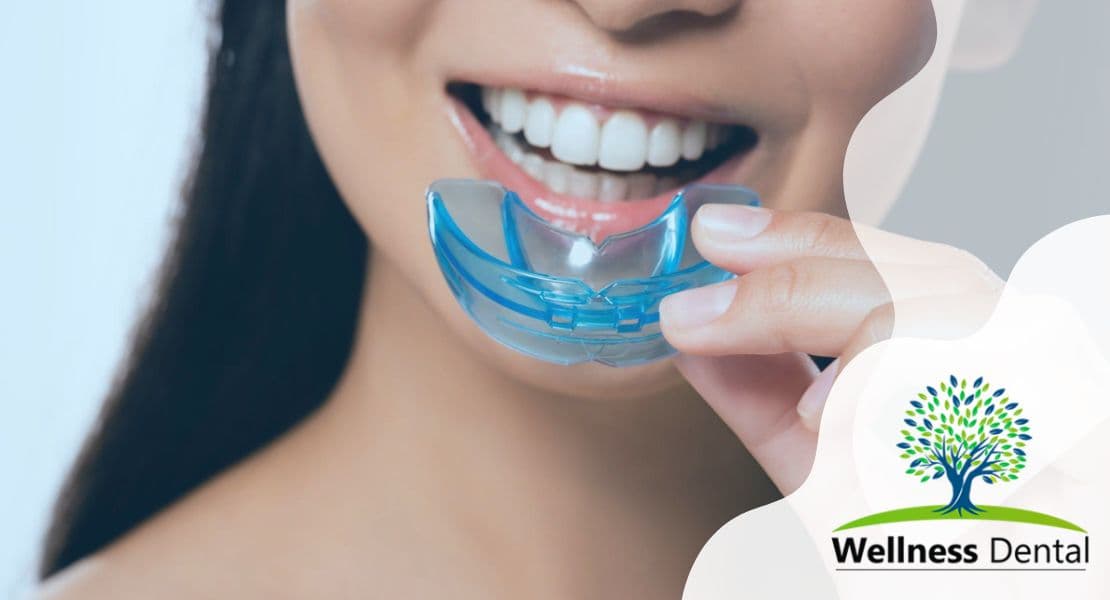What are zygomatic implants?
Zygomatic implants are a type of dental implant that is used for patients with severe bone loss or periodontal disease. Unlike traditional dental implants that are placed in the jawbone, zygomatic implants are placed in the cheekbones, specifically in the zygomatic arch.
These implants are suitable for patients who do not have enough bone in their jaws to support traditional implants. By anchoring the implants in the cheekbones, zygomatic implants bypass the need for bone grafting procedures, making them a viable option for patients with insufficient jaw bone.
The advantages of zygomatic implants over traditional implants include shorter treatment times, as they do not require bone grafting, and the ability to immediately support a dental prosthesis. Patients can experience improved self-esteem and confidence, as zygomatic implants provide a secure and stable foundation for dental restorations without the need for removable dentures.
Zygomatic implants are a revolutionary solution for patients with severe bone loss or periodontal disease, offering a viable alternative to traditional dental implants by utilizing the cheekbones for support.
Importance of finding zygomatic implants near me

When considering zygomatic implants, it is crucial to find a specialist oral surgeon near you. These implants require a high level of expertise and precision, making it essential to have a skilled and experienced professional perform the procedure. However, finding such a specialist may be challenging due to the limited availability of talented doctors in the area who can provide this treatment.
Additionally, the potential cost barriers in your home country could further highlight the importance of finding zygomatic implants near you. Traveling to another location for this treatment can significantly increase the overall expenses, making it more accessible and cost-effective to find a specialist nearby.
The benefits of having a specialist oral surgeon perform zygomatic implant surgery include improved success rates, reduced risk of complications, and personalized care. With the right specialist by your side, you can have peace of mind knowing that you are in capable hands and receiving the best possible treatment.
Understanding Dental Implants
Zygomatic dental implants offer a revolutionary alternative to conventional dental implants for patients with severe bone loss in the upper jaw. While conventional implants attach to the maxillary bone, zygomatic implants anchor in the zygomatic bone, providing a stable foundation for tooth replacement. With success rates comparable to traditional implants, zygomatic implants eliminate the need for bone grafting, reducing treatment time and improving patient satisfaction.
Surgical placement of zygomatic implants requires specialized training and experience due to the complex nature of the procedure. Utilizing cutting-edge technology such as 3D imaging and intraoral scanning ensures precise implant placement and optimal outcomes.
Patients with severe bone loss can experience a dramatic improvement in their quality of life with zygomatic implants. Restoring function and aesthetics, these implants enable patients to eat, speak, and smile confidently once again. For those who may have been ineligible for traditional implants due to insufficient bone volume, zygomatic implants offer a life-changing solution.
Traditional implants vs. zygomatic implants
Traditional dental implants are anchored into the jawbone, while zygomatic implants are anchored in the zygomatic bone, which is denser and typically used when there is significant bone loss in the upper jaw. Traditional implants are suitable for patients with adequate bone density, but for those with bone loss, bone grafting procedures may be necessary to support the implants. Zygomatic implants, on the other hand, are an alternative for patients with severe bone loss, as they do not require bone grafting.
Another key difference is the potential for immediate placement of the prosthesis. With traditional implants, a healing period of several months is typically required before the prosthesis can be placed. In contrast, zygomatic implants can often support a temporary prosthesis immediately after placement, providing immediate functionality and aesthetic restoration.
In terms of surgical training and experience, the placement of traditional implants generally requires less specialized training compared to zygomatic implants. Zygomatic implants placement involves a more complex surgical technique and therefore requires more extensive training and experience.
In summary, while both traditional and zygomatic implants offer solutions for patients with missing teeth, they differ in terms of bone anchoring, suitability for patients with bone loss, potential for immediate placement of prosthesis, and the level of surgical training and experience required for placement.
Severe Bone Loss and Its Implications
Severe bone loss in the jaw can significantly impact dental implant options for individuals. When the jawbone deteriorates, there may be limited support for traditional dental implants, making it challenging for individuals to receive this standard treatment. Severe bone loss can also lead to an increased risk of implant failure and the need for bone grafting procedures to build up the bone structure, adding to the complexity and cost of treatment.
Individuals facing severe jawbone deterioration may also experience limitations in their ability to receive traditional implants due to the lack of bone support. This can result in difficulties with chewing, speaking, and overall oral function, as well as aesthetic concerns related to facial structure.
Thankfully, for those with severe bone loss, zygomatic dental implants offer a potential solution. Zygomatic implants, which are longer and anchor into the zygomatic bone in the upper jaw, bypass the need for bone grafting and provide a stable foundation for dental restorations. This innovative approach can offer individuals with severe bone loss the opportunity to benefit from implants, restoring their oral function, and aesthetics. Zygomatic dental implants may be a viable option for individuals facing severe bone loss and seeking dental restoration.
Causes of severe bone loss in the jaw
Severe bone loss in the jaw can result from various factors, including decay and tooth loss. When teeth decay or are lost, the surrounding bone no longer receives the necessary stimulation from chewing and biting, leading to deterioration. This bone loss can significantly impact the ability to receive traditional dental implants, as there may not be enough healthy bone left to support the implant properly.
The impact of bone density loss on the jawbone is crucial in dental implant procedures. Without sufficient bone density, traditional implants may not be a viable option. However, zygomatic dental implants offer a solution for severe bone loss by anchoring into the zygomatic (cheek) bone, which tends to be denser and can provide the necessary support for the implant without the need for a bone graft.
The role of zygomatic bone density in securing implants is key in avoiding the need for a bone graft. Zygomatic implants utilize the sturdy cheekbone for support, making them a suitable alternative for those with severe bone loss in the jaw. These implants can provide a stable and long-lasting solution for individuals who may not be candidates for traditional dental implants due to extensive bone loss.
Impact of severe bone loss on oral health
Severe bone loss can have a significant impact on oral health, particularly on the ability to receive dental implants and maintain overall oral function and aesthetics. Without proper bone support, the placement of dental implants becomes challenging, as the implants rely on a strong and healthy jawbone to integrate and provide stability. This can lead to limitations in restoring a complete smile and maintaining oral function.
Individuals with severe bone loss may face challenges in restoring their smile and overall oral health, as traditional methods of replacing missing teeth, such as dentures or bridges, may not provide the same stability and natural appearance as dental implants. Additionally, severe bone loss can affect the aesthetics of the face, causing a sunken or aged appearance.
However, there are potential solutions and treatment options available to address severe bone loss and regain a complete, healthy smile. These options include bone grafting, sinus lifts, and advanced implant techniques designed to work with compromised bone structure. These treatments can help to rebuild and strengthen the jawbone, allowing for successful implant placement and restoring both oral function and aesthetics. Overall, it’s important for individuals with severe bone loss to consult with a qualified dental professional to explore the best treatment options for their specific needs.
The Role of Bone Grafts in Implant Treatment
Bone grafts play a critical role in implant treatment for patients with severe bone loss, as they provide the necessary bone structure to support dental implants. The process involves taking bone from another part of the body or using synthetic materials to augment the existing bone in the jaw. However, bone grafting can prolong the overall treatment time, as the healing process can take several months before the dental implants can be placed. Success rates for bone grafts can vary, with some patients experiencing complications or the need for additional procedures.
For patients with severe bone loss, bone grafting can offer the opportunity to receive traditional dental implants, but it comes with the drawbacks of extended healing time and potential complications. On the other hand, zygomatic implants present a superior alternative for immediate teeth placement without the need for bone grafts. Zygomatic implants are longer and anchor to the cheekbone, providing a stable foundation for dental restorations. This innovative solution significantly reduces healing time and eliminates the need for bone grafting, offering a more efficient and effective treatment option for patients with severe bone loss.
What are bone grafts?
Bone grafts are a surgical procedure used to repair and rebuild bone that has been damaged or lost due to injury, disease, or tooth loss. This process involves taking bone from another part of the body or using a synthetic or donor bone and placing it in the area where new bone growth is needed.
Traditional bone grafting typically requires a six-month healing period to allow the newly placed bone to fuse with the existing bone. This method also has a lower success rate compared to zygomatic implants, which are a more advanced alternative.
Bone grafting differs from the immediate placement of implants with zygomatic implants, which involves attaching dental implants to the cheekbone rather than the jaw, eliminating the need for bone grafting and significantly reducing the healing period.
The drawbacks of bone grafting include the lengthy healing period, lower success rate, and potential complications from harvesting bone from another part of the body. On the other hand, zygomatic implants offer the benefit of immediate placement and significantly higher success rates, making them a more efficient and effective alternative to traditional bone grafts.
Types of bone grafting procedures
1. Autografts: In this procedure, bone is taken from another site within the patient’s own body, usually the hip or chin, and transplanted to the site of severe bone resorption in the upper jaw. The advantage of autografts is that they have the best potential to integrate with the patient’s existing bone structure, but the downside is the need for an additional surgical site and the potential for donor site morbidity.
2. Allografts: Allografts involve using bone from a donor, which is processed and sterilized before being transplanted into the patient. The pros of allografts include the availability of a ready source of bone and the elimination of the need for a second surgical site. However, there is a risk of immune rejection and the potential for disease transmission.
3. Xenografts: Xenografts use bone from another species, usually bovine or porcine, which is also processed and sterilized before being transplanted. The advantage of xenografts is their availability and lack of donor site morbidity, but there is a potential risk of immune rejection and disease transmission.
Compared to these bone grafting procedures, zygomatic implants offer a less invasive alternative for patients with severe bone resorption in the upper jaw. Instead of grafting bone, zygomatic implants are anchored in the zygoma (cheekbone), providing a stable foundation for dental prosthetics. The main pros of zygomatic implants include avoiding the need for bone grafting and the associated risks and complications. However, they may not be suitable for all patients, and proper assessment and case selection are important.
FAQ
What is the cost of zygomatic implant?
The cost of zygomatic implants can vary depending on various factors, including the specific treatment plan and the individual needs of the patient. It is important to note that zygomatic implant placement is a specialized procedure that requires the expertise of a skilled maxillofacial surgeon.During the initial consultation, your maxillofacial surgeon will evaluate your unique case and develop a personalized treatment plan.
How painful are zygomatic implants?
Zygomatic implants are a revolutionary solution for patients with severe bone resorption in the upper jaw. One common concern that patients have is the level of pain associated with zygomatic implant placement.
Fortunately, zygomatic implants are designed to minimize discomfort during and after the procedure. The surgery itself is typically performed under general anesthesia, ensuring that you remain completely comfortable and pain-free throughout.
What is the recovery time for zygomatic implants?
Recovery time for zygomatic implants can vary from patient to patient, but generally, it takes several weeks for the initial healing process. After the surgery, it is normal to experience some swelling and discomfort in the treated area. Your maxillofacial surgeon will provide you with pain medication and instructions on how to manage any discomfort.
What is zygomatic implants package?
Zygomatic implants offer a comprehensive package for patients with severe bone resorption in the upper jaw. This innovative treatment option provides a stable foundation for dental prosthetics without the need for invasive bone grafting procedures.
During the initial consultation with a skilled maxillofacial surgeon, your unique case will be thoroughly evaluated to develop a personalized treatment plan.
Are zygomatic implants worth it?
Zygomatic implants have gained traction as a viable solution for patients with severe bone resorption in the upper jaw. These implants anchor directly into the cheekbone, providing a stable foundation for dental prosthetics without the need for invasive bone grafting procedures.
Is zygomatic implant surgery safe?
Zygomatic implant surgery is considered a safe and effective solution for patients with severe bone resorption in the upper jaw. Unlike traditional bone grafting procedures, zygomatic implants offer a less invasive alternative that eliminates the need for grafting bone from other sources.
What size are zygomatic implants?
Zygomatic implants come in various sizes to accommodate different patients’ needs. The size of zygomatic implants is determined by factors such as the patient’s bone mass and density, as well as the form of bone loss they are experiencing. During the initial consultation with a maxillofacial surgeon, your unique case will be thoroughly evaluated to determine the appropriate size of zygomatic implants for you.






